Papers by Heinz Gregor Wieser

Epilepsia, 1991
We report a detailed electroclinical analysis of 320 seizures recorded by foramen ovale electrode... more We report a detailed electroclinical analysis of 320 seizures recorded by foramen ovale electrodes in 77 potential candidates for selective temporal lobe surgery because of antiepileptic drug-resistant seizures. The exact localization of the origin of seizure discharges, the electroencephalographic (EEG) seizure onset patterns, transhemispheric propagation, propagation time, duration of discharge, laterality of discharge termination, postictal focal slowing, correspondence between foramen ovale recordings and the scalp EEG, and the influence of antiepileptic drug modifications were studied and correlated with the clinical seizure semiology and with postoperative outcome following selective amygdalohippocampectomy. In general, the foramen ovale electrode technique provided good neurophysiological information in candidates for selective amygdalohippocampectomy. The following ictal signs predicted a good surgical outcome: (a) unilateral and anterior mediobasal temporal lobe seizure onset, (b) short seizure duration, (c) no or infrequent contralateral seizure discharge propagation, and (d) if propagation to the contralateral mediobasal temporal lobe occurred, the postoperative outcome was better the later the contralateral mediobasal temporal lobe was affected. Postoperative outcome was also better the less frequently contralateral interictal spikes occurred. No direct predictive value could be attributed to the presence of an initial arrest reaction.
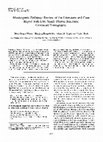
Epilepsia, 1997
Summary: Purpose: We report a case of musicogenic epilepsy with ictal single photon emission comp... more Summary: Purpose: We report a case of musicogenic epilepsy with ictal single photon emission computed tomography (SPECT) study and discuss the findings of this patient in the context of 76 cases with musicogenic epilepsy described in the literature and seven other cases followed in Zurich.Methods: We analyzed the 83 patients according to the precipitating musical factors, type of epilepsy, presumed localization of seizure onset, and demographic data.Results: Fourteen of 83 patients (17%) had seizures triggered exclusively by music. At time of examination, music was the only known precipitating stimulus in 65 of 83 patients (78%). Various characteristics of the musical stimulus were significant, e.g., musical category, familiarity, and instruments.Conclusions: Musicogenic epilepsy is a particular form of epilepsy with a strong correlation to the temporal lobe and a right-sided preponderance. A high musical standard might predispose for musicogenic epilepsy. Moreover, the majority of cases do not fall into the category of a strictly defined “reflex epilepsy”, but appear to depend on the indermediary of a certain emotional reaction mediated through limbic mesial temporal lobe structures.
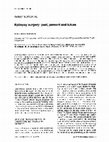
Seizure-european Journal of Epilepsy, 1998
Although epilepsy surgery has met with increased interest in recent years it is still underused i... more Although epilepsy surgery has met with increased interest in recent years it is still underused in most countries, particularly third-world countries. Possible reasons for the recent expansion in epilepsy surgery in the so-called developed countries include the availability of advanced non-invasive diagnostic tools to delineate epileptogenic lesions and epilepsy-related functional deficits. and to prove 'epileptogenicity'. Improved surgical techniques are, however, equally important. This translates into better postsurgical outcome figures and into a larger population of difficult-to-treat patients profiting from surgical therapy. There is, also. an important role for epilepsy surgery within the modem neuroscience field. A critical review and analysis of the present state-of-the-art epilepsy surgery is presented and possible scenarios for its future development are outlined. Within this framework the conceptual differentiation of epilepsy surgery into three categories-'lesion-oriented surgery', 'epilepsy-oriented lesional surgery' and 'epilepsy surgery SEXISTS srr-icro'-is maintained, since it is relevant to the organization of epilepsy centres. The growing need for quality control and multidiiciplinary and worldwide collaboration is emphasized.
Epilepsia, 2003
Purpose: To determine the effect of levetiracetam (LEV) on partial seizure subtypes (simple parti... more Purpose: To determine the effect of levetiracetam (LEV) on partial seizure subtypes (simple partial, complex partial, and secondarily generalized seizures) in patients with refractory epilepsy.
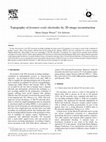
Clinical Neurophysiology, 2001
To date, the foramen ovale (FO) electrode recording technique has been used in 234 patients at ou... more To date, the foramen ovale (FO) electrode recording technique has been used in 234 patients at our center to assist in the evaluation of epilepsy surgery. Most of the patients suffered from mesial temporal lobe epilepsy (MTLE) and were candidates for a selective amygdalohippocampectomy. Knowledge of the exact topography of the FO electrodes is mandatory for a more precise anatomo-electro-clinical correlation of seizures and for a better understanding of FO electrode recorded electroencephalogram (EEG) and evoked potentials generated in the hippocampal formation or in nearby thalamic relays or brainstem structures. Here, we describe and illustrate a 3D image reconstruction of FO electrodes in situ as an important step to better define the generators of MTLE seizures as well as of interictal spikes and physiological EEG signals recorded with FO electrodes. q
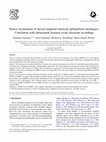
Clinical Neurophysiology, 2005
Objective: We have investigated the localization accuracy of low-resolution electromagnetic tomog... more Objective: We have investigated the localization accuracy of low-resolution electromagnetic tomography (LORETA) for mesial temporal interictal epileptiform discharges (IED) on a statistical basis by using clinical electroencephalographic (EEG) data of simultaneous scalp and intracranial foramen ovale (FO) electrode recordings. Methods: We retrospectively analyzed the IED of 15 patients who underwent presurgical assessment for intractable temporal lobe epilepsy. All patients have subsequently undergone amygdalohippocampectomy. The scalp signals were averaged time-locked to the peak activity in bilateral 10-contact FO electrode recordings. Source modeling was carried out by using statistical non-parametric mapping (SNPM) of LORETA values and by calculating raw LORETA values of averaged IED. The results were compared to intracranial data obtained from FO electrode recordings. Results: Two thousand six hundred and fifteen discharges could be attributed to 19 different patterns of intracranial mesial temporal IED. SNPM of LORETA revealed confined ipsilateral mesial temporal solutions for 14 (73.7%) and no significant solutions for five (26.3%) of these patterns. Raw LORETA current density distributions of the 19 averaged IED patterns revealed ipsilateral basal to lateral temporal solutions for the 14 IED patterns with a sufficient signal to noise ratio (SNR), but spurious results for those five IED with a low SNR. Conclusions: SNPM of LORETA but not LORETA analysis of averaged IED patterns accurately localizes the source generators of mesial temporal IEDs. Significance: SNPM of raw LORETA values might be appropriate for localizing restricted mesial temporal lobe sources.
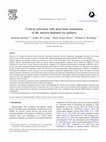
Clinical Neurophysiology, 2006
Objective: We studied the relation between thalamic stimulation parameters and the morphology, to... more Objective: We studied the relation between thalamic stimulation parameters and the morphology, topographic distribution and cortical sources of the cerebral responses in patients with intractable epilepsy undergoing deep brain stimulation (DBS) of the thalamus. Methods: Bipolar and monopolar stimuli were delivered at a rate of 2 Hz to the anterior (AN, four patients), the dorsomedian (DM, four patients), and the centromedian nucleus (CM, one patient) using the programmable stimulation device (Medtronic ITREL II). Source modeling was carried out by using statistical non-parametric mapping of low-resolution electromagnetic tomography (LORETA) values. Results: All patients demonstrated reproducible time-locked cortical responses (CRs) consisting of a sequence of components with latencies between 20 and 320 ms. The morphology of these CRs, however, was very heterogeneous, depending primarily on the site of stimulation. Following AN stimulation, cortical activation was most prominent in ipsilateral cingulate gyrus, insular cortex and lateral neocortical temporal structures. Stimulation of the DM mainly showed activation of the ipsilateral orbitofrontal and mesial and lateral frontal areas, but also involvement of mesial temporal structures. Stimulation of the CM showed a rather diffuse (though still mainly ipsilateral) increase of cortical activity. The magnitude of cortical activation was positively related to the strength of the stimulus and inversely related to the impedance of the electrode. Conclusions: The pattern of cortical activation corresponded with the hodology of the involved structures and may underscore the importance of optimal localization of DBS electrodes in patients with epilepsy. Significance: The method of analyzing sources of CRs could potentially be a useful tool for titration of DBS parameters in patients with electrode contacts in clinically silent areas. Furthermore, the inverse relation of the cortical activation and the impedance of the electrode contacts might suggest that these impedance measurements should be taken into consideration when adjusting DBS parameters in patients with epilepsy.
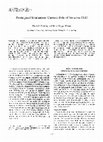
Epilepsia, 2000
Summary: Our purpose was to review the current role of invasive and semi-invasive EEG in the pres... more Summary: Our purpose was to review the current role of invasive and semi-invasive EEG in the presurgical evaluation of candidates for epilepsy surgery. The use of stereotactically implanted intracranial depth (stereo-EEG), subdural strip and grid, and foramen ovale electrodes, as well as intraoperative electrocorticography and electrical brain stimulation (“functional mapping”) at the Epilepsy Center University Hospital Zurich, from 1984 to 1998, is analyzed. Advantages and disadvantages of the various intracranial EEG techniques are critically discussed. Out of 422 selective amygdalohippocampectomies performed in Zurich, 54% had non-invasive, 32% had semi-invasive, and 14% had invasive presurgical EEG evaluation. Because patients currently referred to our center increasingly present with a complex history of disease, i.e., constitute so-called “difficult cases”, there is trend to combine several invasive and semi-invasive, pre- and intraoperative neurophysiological techniques.
Clinical Neurophysiology, 2004
Objective: To study temporal and spatial development of EEG patterns in sporadic and iatrogenic C... more Objective: To study temporal and spatial development of EEG patterns in sporadic and iatrogenic Creutzfeldt-Jakob disease patients. Methods: Temporal and spatial development of EEG patterns in 4 patients with sporadic Creutzfeldt -Jakob disease and 2 patients with iatrogenic Creutzfeldt -Jakob disease due to implantation of contaminated brain depth electrodes were investigated. A total of 56 EEGs were analyzed, over time spans ranging from 1272 to 3 days prior to death.
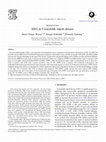
Clinical Neurophysiology, 2006
Electroecenphalography (EEG) is an integral part of the diagnostic process in patients with Creut... more Electroecenphalography (EEG) is an integral part of the diagnostic process in patients with Creutzfeldt-Jakob disease (CJD). The EEG has therefore been included in the World Health Organisation diagnostic classification criteria of CJD. In sporadic CJD (sCJD), the EEG exhibits characteristic changes depending on the stage of the disease, ranging from nonspecific findings such as diffuse slowing and frontal rhythmic delta activity (FIRDA) in early stages to disease-typical periodic sharp wave complexes (PSWC) in middle and late stages to areactive coma traces or even alpha coma in preterminal EEG recordings. PSWC, either lateralized (in earlier stages) or generalized, occur in about twothirds of patients with sCJD, with a positive predictive value of 95%. PSWC occur in patients with methionine homozygosity and methionine/valine heterozygosity but only rarely in patients with valine homozygosity at codon 129 of the prion protein gene. PSWC tend to disappear during sleep and may be attenuated by sedative medication and external stimulation. Seizures are an uncommon finding, occurring in less than 15% of patients with sCJD. In patients with iatrogenic CJD, PSWC usually present with more regional EEG findings corresponding to the site of inoculation of the transmissible agent. In genetic CJD, PSWC in its typical form are uncommon, occurring in about 10%. No PSWC occur in EEG recordings of patients with variant CJD.
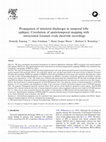
Clinical Neurophysiology, 2006
Objective: We have investigated intracerebral propagation of interictal epileptiform discharges (... more Objective: We have investigated intracerebral propagation of interictal epileptiform discharges (IED) in patients with mesial temporal lobe epilepsy (MTLE) by using spatiotemporal source maps based on statistical nonparametric mapping (SNPM) of low resolution electromagnetic tomography (LORETA) values. Methods: We analyzed 30 patterns of IED recorded simultaneously with scalp and intracranial foramen ovale (FO) electrodes in 15 consecutive patients with intractable MTLE. The scalp EEG signals were averaged time-locked to the peak activity in bilateral 10-contact FO electrode recordings. SNPM was applied to LORETA values and spatiotemporal source maps were created by allocating the t-values over time to their corresponding Brodmann areas. Propagation was defined as secondary statistically significant involvement of distinct cortical areas separated by >15 ms. The results were correlated with intracranial data obtained from FO electrode recordings and with scalp EEG recordings. All patients underwent subsequent amygdalo-hippocampectomy and outcome was assessed one year after surgery. Results: We found mesial to lateral propagation in 6/30 IED patterns (20%, four patients), lateral to mesial propagation in 4/30 IED patterns (13.3%, four patients) and simultaneous (within 15 ms) activation of mesial and lateral temporal areas in 6/30 IED patterns (20%, five patients). Propagation generally occurred within 30 ms and was always limited to ipsilateral cortical regions. Nine/30 IED patterns (30%) showed restricted activation of mesial temporal structures and no significant solutions were found in 5/30 IED patterns (16.7%). There was no clear association between the number or characteristics of IED patterns and the postsurgical outcome. Conclusions: Spatiotemporal mapping of SNPM LORETA accurately describes mesial to lateral temporal propagation of IED, and vice versa, which commonly occur in patients with MTLE. Significance: Intracerebral propagation must be considered when using non-invasive source algorithms in patients with MTLE. Spatiotemporal mapping might be useful for visualizing this propagation.
Philosophical Transactions of The Royal Society B: Biological Sciences, 2000
Hippocampus, 1997
Studies of amnesia have demonstrated that the hippocampus is necessary for long-term memory, but ... more Studies of amnesia have demonstrated that the hippocampus is necessary for long-term memory, but its precise role in memory is unknown. We designed a positron emission tomography experiment with tailored encoding and retrieval tasks that permitted the isolation of different mnemonic functions theorized to be mediated by the hippocampus. These functions included encoding single items, establishing interitem associations, novelty detection, and retrieving recently formed associations. Of these, we found hippocampal and parahippocampal activation only during associative learning. Our results indicate that the hippocampal formation may be particularly involved in the establishment of associations among components of an episode in memory.
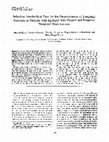
Epilepsia, 1998
Summary: Purpose: Selective amobarbital tests with selective temporary inactivation of the left f... more Summary: Purpose: Selective amobarbital tests with selective temporary inactivation of the left frontal operculum and/or the left parietotemporal cortex were performed in 5 patients with left-hemispheric epileptogenic lesions in or adjacent to classical Broca's and/or Wemicke's aréa. The aim was to assess language functions in these brain regions before surgery, to tailor the surgery according to the individual functional importance of these brain regions, and to predict postoperative outcome.Methods: Amobarbital was injected by transfemoral selective catheterization of the arteries supplying the target areas. Along with neuropsychological and neurological testing during the amobarbital procedure, EEG recordings were performed in all patients, and [199mTc]HMPAO-single photon emission computed tomography (SPECT) in 2 patients.Results: After the amobarbital injection into the left frontal opercular region, there was no recognizable language dysfunction in 3 patients. In these 3 patients, the lesions in or adjacent to the frontal operculum were completely resected without postoperative language impairment. In the remaining 2 patients, temporary language impairment after the amobarbital injection into the left frontoopercular and Wemicke's region, respectively, suggested language functions in these areas. Surgery was restricted to the left mesiotemporal lobe in 1 patient. In the other patient, the tumor infiltrating the frontal operculum was restrictively resected. Postoperatively, the fist patient had no language impairment, but the latter had transient global aphasia, from which she recovered.Conclusions: Selective temporary amobarbital inactivation of brain regions that may be associated with language has clearly indicated the presence or absence of language functions in these regions. The test contributed substantially to planning of the surgical approach in each patient. The predictive alue of the amobarbital test was demonstrated by the postoperative outcome.

Epilepsy Research, 1997
Thalamic glucose metabolism has been studied in 24 patients suffering from temporal lobe epilepsy... more Thalamic glucose metabolism has been studied in 24 patients suffering from temporal lobe epilepsy (TLE) using interictal 18F-fluorodeoxyglucose (FDG) positron emission tomography (PET). A total of 17 patients had a unilateral TL seizure onset, 11 of these patients had a mesial temporal lobe epilepsy syndrome (MTLE), with mesial gliosis and a mesial TL seizure origin. Three patients had a lateral TL seizure origin, and 3 patients had mesial TL tumors. Bilateral TLE was assumed in 7 patients. Only in the patient group with MTLE (n = 11), the ipsilateral thalamic glucose uptake showed a statistically significant lower value when compared to the thalamus of the contralateral side (Wilcoxon paired sign test, P = 0.012). There was a more pronounced hypometabolism in right TLE compared to left TLE. A 'hypersynchronous seizure onset pattern' in ictal EEG was only seen in 6 (26%) patients (1 patient with bilateral, 5 with unilateral TLE). No correlation existed between the thalamic, temporal glucose metabolism and the 'hypersynchronous seizure onset pattern'.

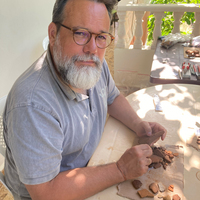


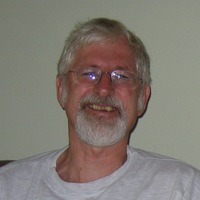


Uploads
Papers by Heinz Gregor Wieser